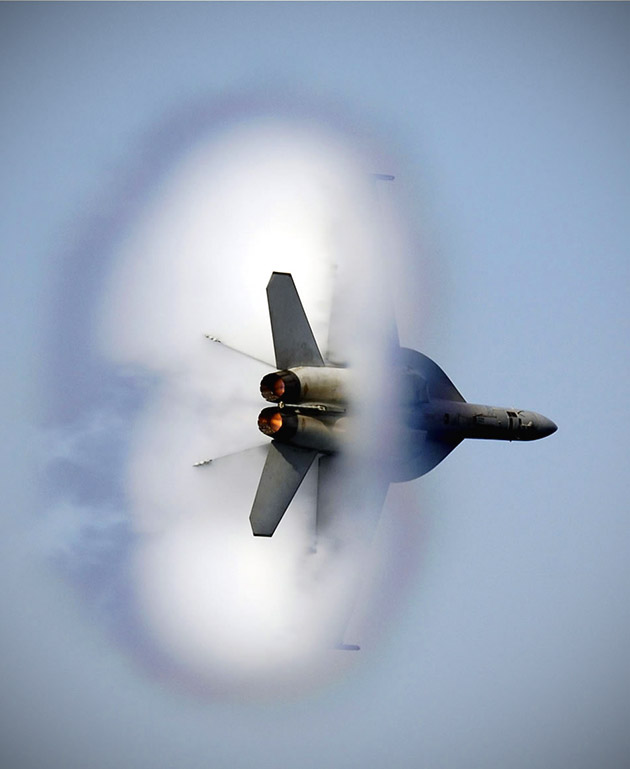
Supersonic speed is essentially a rate of travel of an object that exceeds the speed of sound (Mach 1). For objects traveling in dry air of a temperature of 20 °C at sea level, this speed is approximately 1,125 ft/s, or 1,235 km/h. Flights during which only some parts of the air surrounding an object, such as the ends of rotor blades, reach supersonic speeds are called transonic. This occurs typically somewhere between Mach 0.8 and Mach 1.23. A vapor cone (above) is a visible cloud of condensed water which can sometimes form around an object moving at high speed through moist air, for example an aircraft flying at transonic speeds. Continue reading for another supersonic flight compilation and more information.
When the localized air pressure around the object drops, so does the air temperature. If the temperature drops below the dew point a cloud forms. In the case of aircraft, the cloud is caused by supersonic expansion fans decreasing the air pressure, density and temperature below the dew point. Then pressure, density and temperature suddenly increase across the stern shock wave associated with a return to subsonic flow behind the aircraft. Essentially, the tail of the aircraft is in supersonic flight while the bow is still flying subsonically, and is said to be in transonic flight.
